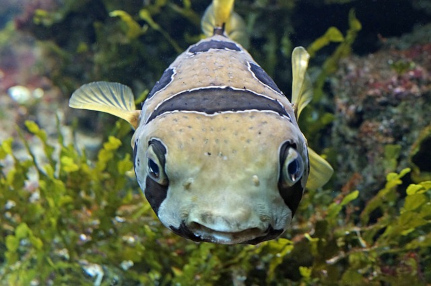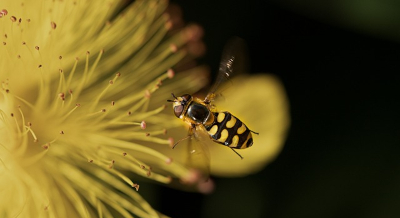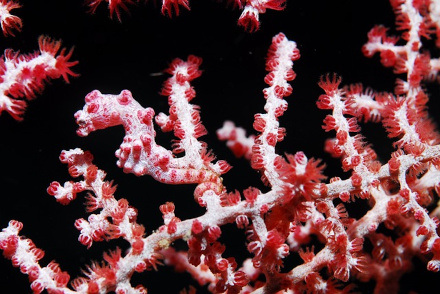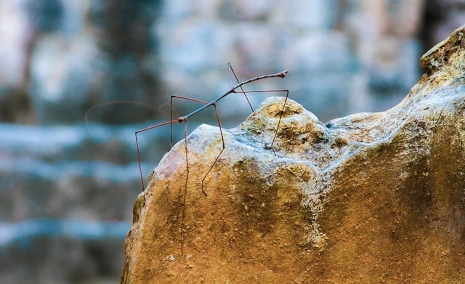Original or fake? The following animals all pretend to be someone or something else in order to protect themselves. Can you keep them apart from their model or recognize them on their matching ground? If you are interested in the arts of mimicry and mimesis, then keep reading!
Mimicry
Mimicry means that animals imitate others visually, auditory, or olfactory. There are two different kinds of mimicry, protective mimicry and aggressive mimicry. Protective or defensive mimicry describes the imitation of dangerous animals in order to protect them from predators. Aggressive mimicry on the other hand is supposed to attract prey by changing their behaviour or their habitat.

https://pixabay.com/de/photos/fisch-krake-wasser-aquarium-1633525/
- Mimic octopus
The mimic octopus or the “Thaumoctopus mimicus” lives mostly in Malaysia, Indonesia. One of his advantages is that he is almost not recognizable on the sandy ground, which also makes it harder for predators to see him.
This kind of octopus also uses the art of mimicry to hide from potential dangers by imitating its appearance. For example, the squid changes its colour and lets its arms appear as spikes in order to look deceptively similar to the firefish, which is very dangerous when you touch it. It can also put its arms very close to its body which makes it look like it has a wide and flat body, like those of the European flounder.

https://pixabay.com/photos/puffer-fish-sea-underwater-world-2374581/
- Filefish
The Blacksaddle filefish or “Paraluteres prionurus” can grow to a maximum of ten centimetres and imitates the shape and colour of the poisonous Valentin’s sharpnose puffer (Canthigaster valentini). The Blacksaddle filefish has an, for its type, untypically wide body, is more colourful and doesn’t change its colour. The Filefish profits from its role model being avoided by predators. The Blacksaddle Filefish lives in the corals on the coast of East Africa, South Africa, Japan, and the Great Barrier Reef. This specific type of mimicry is called Batesian mimicry.

https://pixabay.com/de/photos/schwebefliege-insekt-nahaufnahme-5382916/
- Hoverfly
Poisonous species often wear eye-catching colours, the so-called warning colouration, like wasps, bees or bumblebees. Hoverflies copy these colours and are wearing bright yellow and black strips on their backs, just like their archetypes. When hoverflies are around, people who can’t easily tell them apart usually get anxious, but if you take a closer look, wasps and hoverflies are actually not that similar. While wasps fly with four wings and have long, bent antennae, hoverflies only have two wings at their disposal and have very short antennae. Also interesting: while hoverflies can hover in the air like a helicopter, a wasp is in constant motion.
Mimesis
Mimesis describes the imitation of surroundings in order to blend in and be invisible to predators.

https://pixabay.com/photos/seahorse-pygm%c3%a9-gorgon-2311549/
- Denise’s pygmy seahorse
It’s one of the smallest seahorses in the world and can only get up to 1,35cm long. The seahorse lives in the western Indo-Pacific and imitates corals with their body and colour. It wears wart-like lumps and fits in perfectly with its favourite coral the Scleraxonia Annella reticulate. That’s how the seahorse hides from predators in its natural habitat.

https://pixabay.com/de/photos/stabheuschrecke-phasmatodea-insekt-4639059/
- Phasmatodea
The probably most common case of mimesis is the Phasmatodea also known as the stick insect. By imitating a branch and barely moving during the day, the Phasmatodea can hide from birds and lizards and become invisible to them.
There are many more animals that are transformation artists who might fool you too! I hope you learned something new about the world of animals and continue your research on this fascinating topic.
Sources:
https://www.tierchenwelt.de/specials/tierleben/2880-meister-der-tarnung-wie-sich-tiere-unsichtbar-machen.html?start=10
https://www.tierchenwelt.de/specials/tierleben/2880-meister-der-tarnung-wie-sich-tiere-unsichtbar-machen.html?start=9
https://studyflix.de/biologie/mimikry-und-mimese-2774
https://www.biologie-seite.de/Biologie/Mimikry-Feilenfisch
https://www.biologie-seite.de/Biologie/Mimikry
https://abitur-wissen.org/index.php/biologie/evolution/143-evolution-tarnung-und-warnung-mimikry-und-mimese

